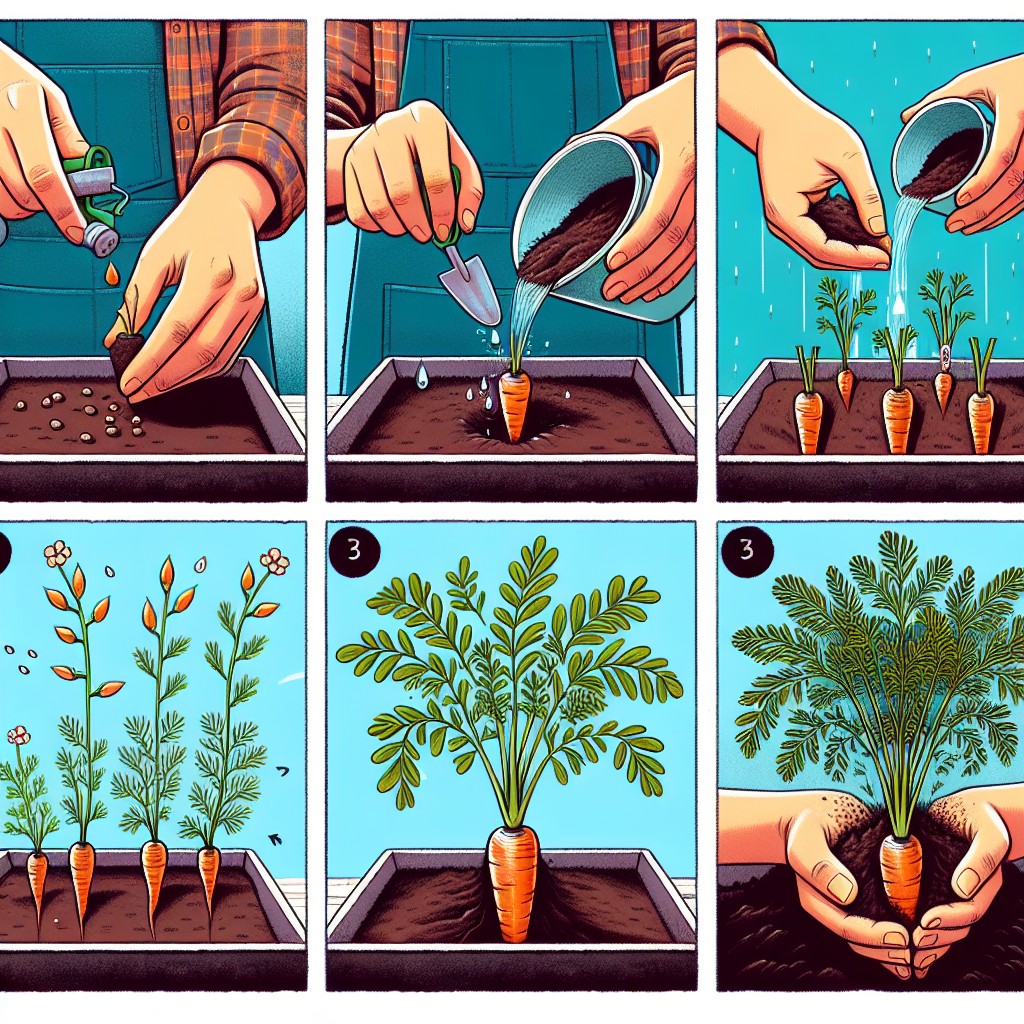
How to plant carrot at home
How to Plant Carrots at Home: A Beginner's Guide
Growing your own vegetables can be a rewarding and fulfilling experience, and one of the easiest vegetables to start with is the carrot. Not only are they packed with nutrients and versatile in the kitchen, but they also require relatively low maintenance. In this guide, we will explore the essential steps on how to plant carrot at home, from selecting the right variety to harvesting your delicious homegrown carrots.
Choosing the Right Carrot Variety
Before you dive into the planting process, it’s essential to choose a carrot variety that suits your garden conditions and personal preferences. Here are a few popular varieties:
- Nantes: Sweet and tender, these carrots are perfect for fresh eating.
- Imperator: Known for their long, tapered roots, they are great for storage.
- Danvers: A versatile variety that performs well in various soil types.
- Chantenay: Short and thick, suitable for heavy soils and ideal for roasting.
Make sure to consider your climate and soil conditions when selecting a variety to ensure the best results.
Preparing the Soil
Carrots thrive in well-drained soil that is free of rocks and debris. Follow these steps to prepare your soil:
- Choose the Right Location: Select a spot that receives full sunlight for at least 6 hours a day.
- Test Soil pH: Carrots prefer a soil pH of 6.0 to 6.8. Consider testing your soil and adjusting it if necessary.
- Till the Soil: Loosen the soil to a depth of at least 12 inches. This helps create space for taproots to grow.
- Add Organic Matter: Incorporate well-rotted compost or aged manure to enrich the soil with nutrients.
- Level the Soil: Rake the surface to remove any clumps or sticks before planting.
Planting Carrots
Now that your soil is ready, it’s time to plant. Here’s how:
- Seed Sowing: Carrots are sown directly into the soil. Space the seeds about 2-4 inches apart and plant them ¼ to ½ inch deep.
- Rows or Beds: You can plant them in rows about 12 inches apart or in wide beds for easier maintenance.
- Moisten the Soil: After planting, water the area gently to ensure the soil is moist but not waterlogged.
It's important to keep the soil consistently damp until germination, which usually takes 14 to 21 days.
Caring for Your Carrot Plants
After planting, your main focus should be on caring for your carrot plants. Here are key aspects to consider:
- Thinning: Once seedlings are 1-2 inches tall, thin them out to ensure adequate space. Aim for 2-4 inches between each plant.
- Watering: Carrots need about 1 inch of water per week. Ensure consistent moisture, especially during dry spells.
- Weeding: Regularly check for weeds, as they can compete for nutrients and water. Use mulch to suppress weed growth.
- Pests and Diseases: Watch out for carrot flies and root diseases. Use organic pest control methods if needed.
When to Harvest Your Carrots
Patience is key when growing carrots. The timing for harvesting varies based on the carrot variety, but here are some general tips to determine when to pull them up:
- After about 2-3 months, check the size of the carrot tops that are visible above the soil. If they look large enough and are about 1 inch in diameter, they are likely ready to harvest.
- Carrots can be harvested at any size, but sweeter flavors develop when they’re left in the ground a bit longer.
- Avoid harvesting during soggy conditions to prevent damaging the carrots.
Storing and Using Your Carrots
Once you’ve harvested your carrots, proper storage is crucial for maintaining freshness:
- Remove tops: Cut off the green tops to prevent them from drawing moisture away from the roots.
- Storage Conditions: Store carrots in a cool, dark place, ideally in a plastic bag in the refrigerator.
- Freezing Carrots: If you have an abundance, consider blanching and freezing them for long-term storage.
Common Mistakes to Avoid
Even seasoned gardeners can make mistakes. Here are a few common pitfalls to avoid when learning how to plant carrot at home:
- Overcrowding: Not thinning seedlings can lead to stunted growth and smaller carrots.
- Inconsistent Watering: Fluctuating moisture levels cause splitting or poor-tasting carrots.
- Ignoring Soil Conditions: Carrots need loose, debris-free soil to grow properly. Compacted or rocky soil can hinder root development.
- Timing of Planting: Planting too late in the season might not allow carrots to mature before the first frost.
Conclusion
Growing your own carrots is easy and gratifying. By understanding how to plant carrot at home and following these guidelines, you will be well on your way to enjoying your own fresh produce. Remember to choose the right variety, prepare the soil, care for your plants, and harvest at the right time. With patience and attention, you will soon be reaping the rewards of your home gardening efforts.
Happy gardening!
By Guest, Published on August 17th, 2024